La grafica vettoriale è molto importante nel settore del ricamo, collegando il mondo del design digitale con il prodotto ricamato finale. Questo tipo di arte crea liscio, design scalabili che mantengono la loro qualità indipendentemente dalle dimensioni, rendendolo perfetto per il ricamo.
A differenza delle immagini normali, i disegni vettoriali non perdono chiarezza quando vengono ridimensionati, che significa loghi, testo, e i motivi intricati appaiono nitidi e professionali su qualsiasi tessuto. Utilizzando l'arte vettoriale, le ricamatrici possono lavorare più velocemente, apportare modifiche facilmente, and produce high-quality results that match their clients’; bisogni esatti.
Dalla personalizzazione degli articoli alla creazione di abbigliamento brandizzato, i disegni vettoriali consentono creatività e precisione, rendendoli essenziali per chiunque lavori nel ricamo moderno.
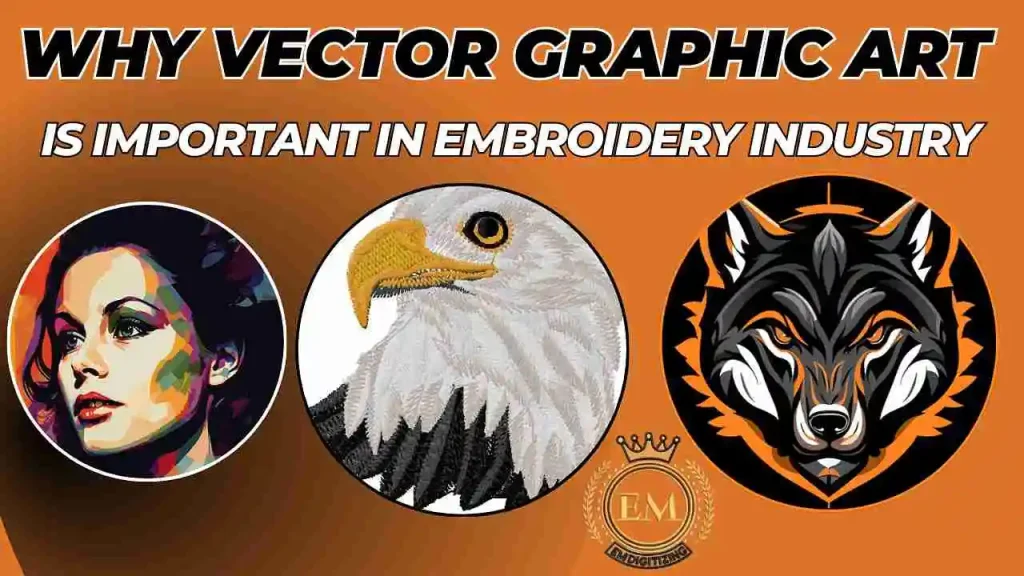
Perché l'arte grafica vettoriale è importante nell'industria del ricamo?
Cos'è l'arte grafica vettoriale?
È un tipo di opera d'arte digitale che utilizza equazioni matematiche per creare immagini, costituito da punti, linee, e forme anziché pixel. Questo metodo consente ai file vettoriali di essere infinitamente scalabili senza perdere qualità, rendendoli ideali per varie applicazioni, compresi i loghi, illustrazioni, e disegni destinati ai grandi formati come i cartelloni pubblicitari o ai piccoli formati come i ricami.
Vengono generalmente creati in programmi software come Adobe Illustrator o CorelDRAW e salvati in formati come SVG, EPS, o IA, che mantengono la qualità e la modificabilità del design su diverse piattaforme e dispositivi.
Principali vantaggi dell'utilizzo della grafica vettoriale nel ricamo
La grafica vettoriale offre vantaggi significativi nel settore del ricamo, consentendo l'alta qualità, scalabile, e disegni facilmente modificabili. Ecco alcuni dei principali vantaggi:
- Alta qualità e scalabilità
- Precisione nei dettagli
- Facilità di personalizzazione e modifiche
- Compatibilità dei file con il software di ricamo
- Cuciture coerenti e precise
1. Alta qualità e scalabilità
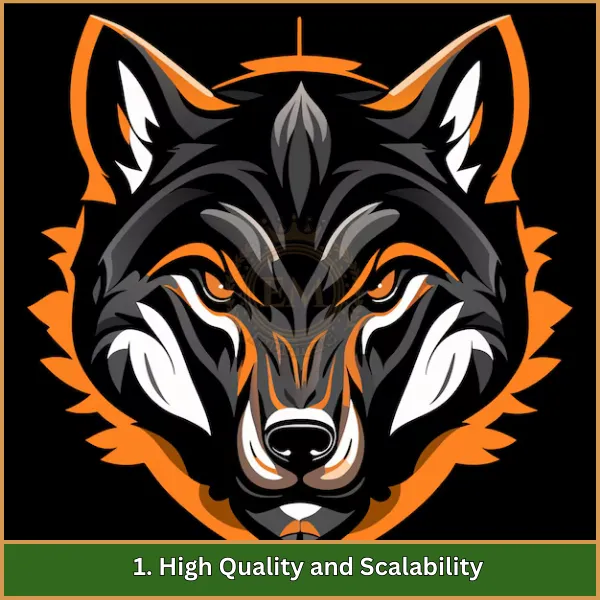
Uno dei maggiori vantaggi di arte vettoriale di progettazione grafica è la sua scalabilità. Poiché la grafica vettoriale si basa su equazioni matematiche, possono essere ridimensionati a qualsiasi dimensione senza perdere chiarezza o diventare pixelati. Questa caratteristica è fondamentale nel ricamo, dove i disegni spesso devono essere ingranditi o ridotti per adattarsi alle diverse aree del tessuto, garantendo che anche i dettagli più piccoli rimangano nitidi e chiari.
2. Precisione nei dettagli

La grafica vettoriale artistica consente dettagli intricati ideali per i lavori di ricamo. Le linee e le forme precise nella grafica vettoriale possono essere convertite accuratamente in punti, rendendo possibile catturare disegni complessi, come loghi o motivi dettagliati, con alta precisione. Questo livello di dettaglio migliora la qualità del ricamo finale, soprattutto per i progetti che richiedono spigoli vivi e bordi definiti.
3. Facilità di personalizzazione e modifiche
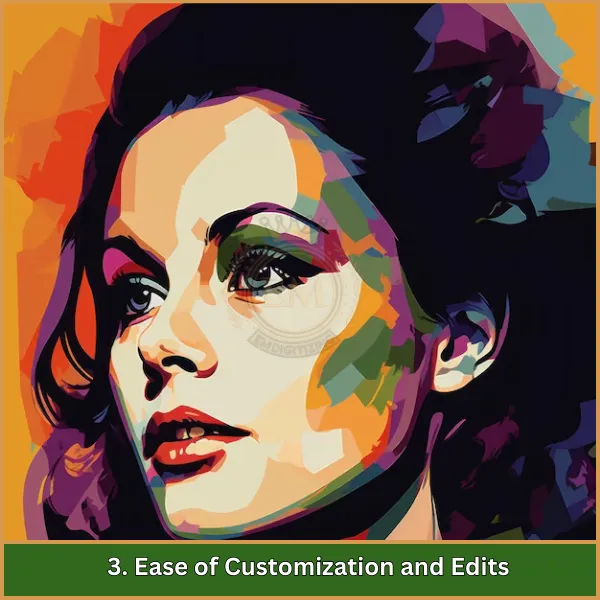
I file vettoriali sono altamente modificabili, consentendo ai designer di modificare i colori, forme, e dimensioni senza compromettere la qualità complessiva del design. Questa flessibilità è particolarmente utile nel ricamo, dove i clienti possono richiedere modifiche o personalizzazioni. I progettisti possono adattare rapidamente i file vettoriali per soddisfare esigenze specifiche, rendere il processo di ricamo più efficiente e rispondente alle richieste del cliente.
4. Compatibilità dei file con il software di ricamo
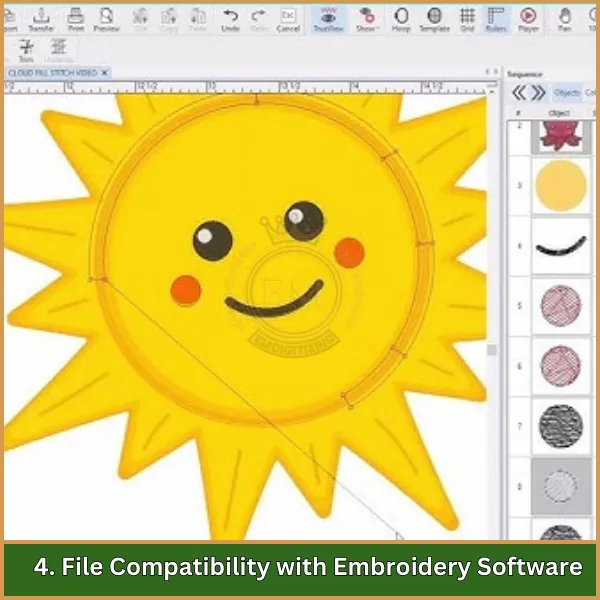
File vettoriali, come quelli in SVG, EPS, o formati AI, sono compatibili con la maggior parte dei software di digitalizzazione ricamo. Questa compatibilità garantisce che i disegni possano essere facilmente importati e convertiti in formati di ricamo come DST o PES. L'utilizzo di file vettoriali compatibili semplifica il processo di digitalizzazione e aiuta a garantire che l'output finale rifletta accuratamente il progetto originale.
5. Cuciture coerenti e precise
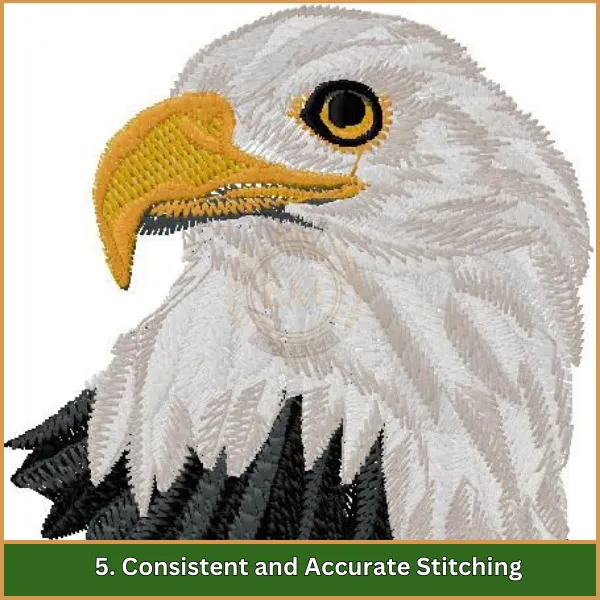
Quando l'arte grafica vettoriale è digitalizzato per il ricamo, si traduce in modelli di punti coerenti in varie applicazioni. Poiché gli elementi di progettazione nei file vettoriali sono definiti matematicamente, la macchina da ricamo può seguire i percorsi esatti, producendo cuciture uniformi e precise. Questa coerenza è essenziale per il mantenimento della qualità, soprattutto quando si producono articoli ricamati in grandi quantità.
Tipi di disegni da ricamo creati con la grafica vettoriale
Utilizzando arte vettoriale in ricamo apre una vasta gamma di possibilità di progettazione. Ecco alcuni tipi comuni di disegni da ricamo spesso creati con grafica vettoriale:
1. Logo ricamato
La grafica vettoriale è ideale per la progettazione di loghi perché preserva le linee nitide, forme, e colori, garantire che i loghi del marchio rimangano nitidi e dall'aspetto professionale sui prodotti ricamati.
2. Monogrammi e iniziali
La grafica vettoriale consente scritte precise e stili complessi, rendendolo perfetto per monogrammi e iniziali, che sono popolari nei progetti di ricamo personali e professionali.
3. Modelli e trame complessi
Modelli e texture dettagliati, compresi i fiori, forme geometriche, e disegni astratti, può essere facilmente convertito dalla grafica vettoriale, mantenendo alti livelli di dettaglio nel ricamo.
4. Mascotte e personaggi
Mascotte e personaggi ricamati, soprattutto per squadre o marchi, trarre vantaggio dalla capacità della grafica vettoriale di catturare caratteristiche dettagliate e dimensioni scalabili senza perdita di qualità.
5. Disegni basati su testo
Citazioni, nomi, o le frasi promozionali sono spesso progettate in formato vettoriale per il ricamo, consentendo un facile ridimensionamento, la modifica, e precisione dei caratteri.
Migliori pratiche per l'utilizzo della grafica vettoriale nel ricamo
L'utilizzo di grafica vettoriale e grafica per il ricamo richiede un'attenta attenzione ai dettagli per garantire che i disegni si traducano bene in punti. Seguire queste migliori pratiche aiuterà a ottenere risultati di ricamo precisi e di alta qualità.
- Scegli il formato file giusto: Utilizza formati di file vettoriali compatibili, come SVG, EPS, o IA, per garantire una facile conversione in software di ricamo.
- Semplifica progetti complessi: Evita dettagli troppo complessi che potrebbero non tradursi bene nel ricamo; semplificare gli elementi mantenendo l'integrità del design.
- Seleziona colori e tratti appropriati: Limita i colori e utilizza riempimenti solidi e contorni chiari, poiché gradienti o tratti sottili possono essere difficili da replicare accuratamente per le macchine da ricamo.
- Garantire la corretta stratificazione e raggruppamento: Organizza gli elementi in livelli o gruppi nel file vettoriale per facilitare un processo di digitalizzazione più semplice ed efficiente.
- Ottimizza per le dimensioni del ricamo: Adatta il disegno vettoriale alle dimensioni del ricamo; garantire che i dettagli siano chiari e proporzionati, anche su piccola scala.
- Usa bordi chiari e definiti: Usa chiaro, bordi definiti per ciascun elemento di design, poiché forniscono percorsi di cucitura chiari per la macchina.
- Prova su tessuto: Metti sempre alla prova il tuo basato su vettori disegno del ricamo sul tessuto previsto per garantire che il disegno si traduca bene dallo schermo alle cuciture.
- Mantenere la coerenza nello spessore della linea: Mantieni coerenti gli spessori delle linee per garantire una qualità del punto uniforme in tutto il disegno.
Conclusione
In conclusione, l'arte grafica vettoriale ha trasformato il ricamo offrendo la precisione e l'adattabilità essenziali per creare disegni di alta qualità. Se sei pronto a dare vita ai tuoi progetti, EMdigitizing è qui per aiutarti!
Offriamo servizi di digitalizzazione professionali con un impegno per la qualità, tempi di consegna super rapidi, e tariffe convenienti. La nostra opzione di anteprima ti consente di rivedere il tuo progetto prima di finalizzarlo, assicurandoti che sia esattamente quello che avevi immaginato.
E come cliente per la prima volta, goditi un'esclusiva 50% sconto. Scopri il EMDigitalizzazione differenza e migliora il tuo ricamo oggi!
